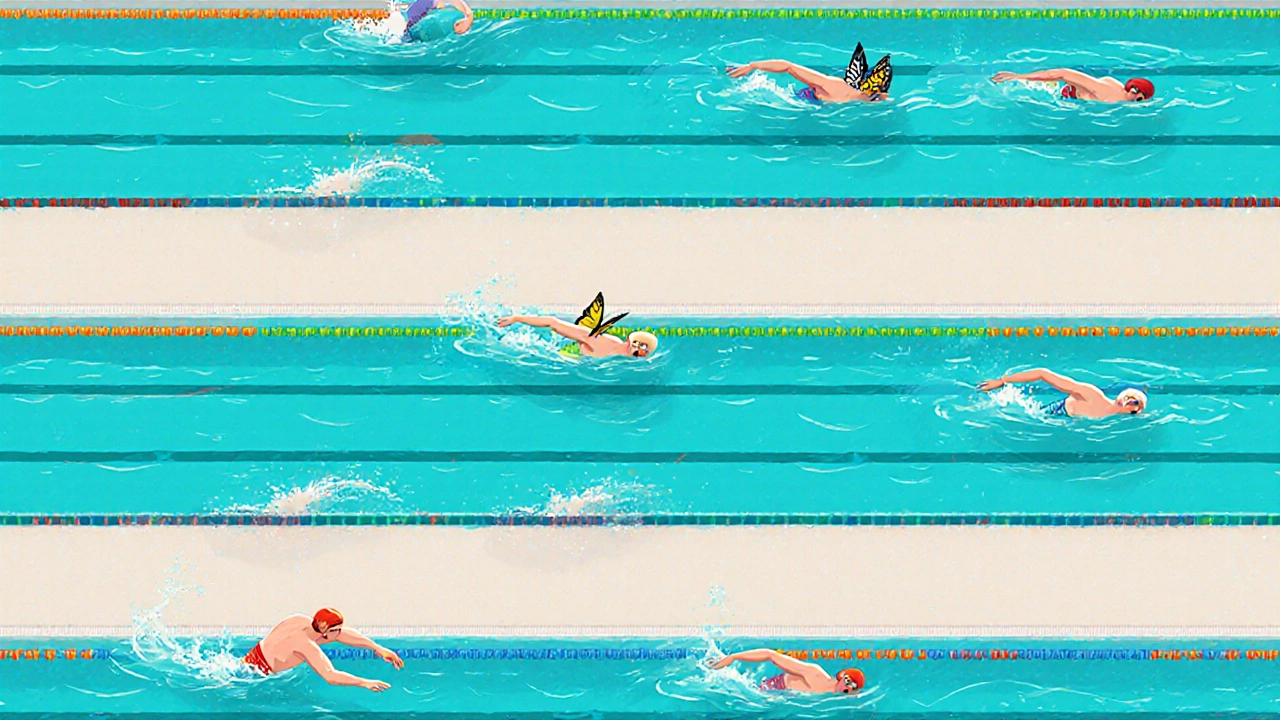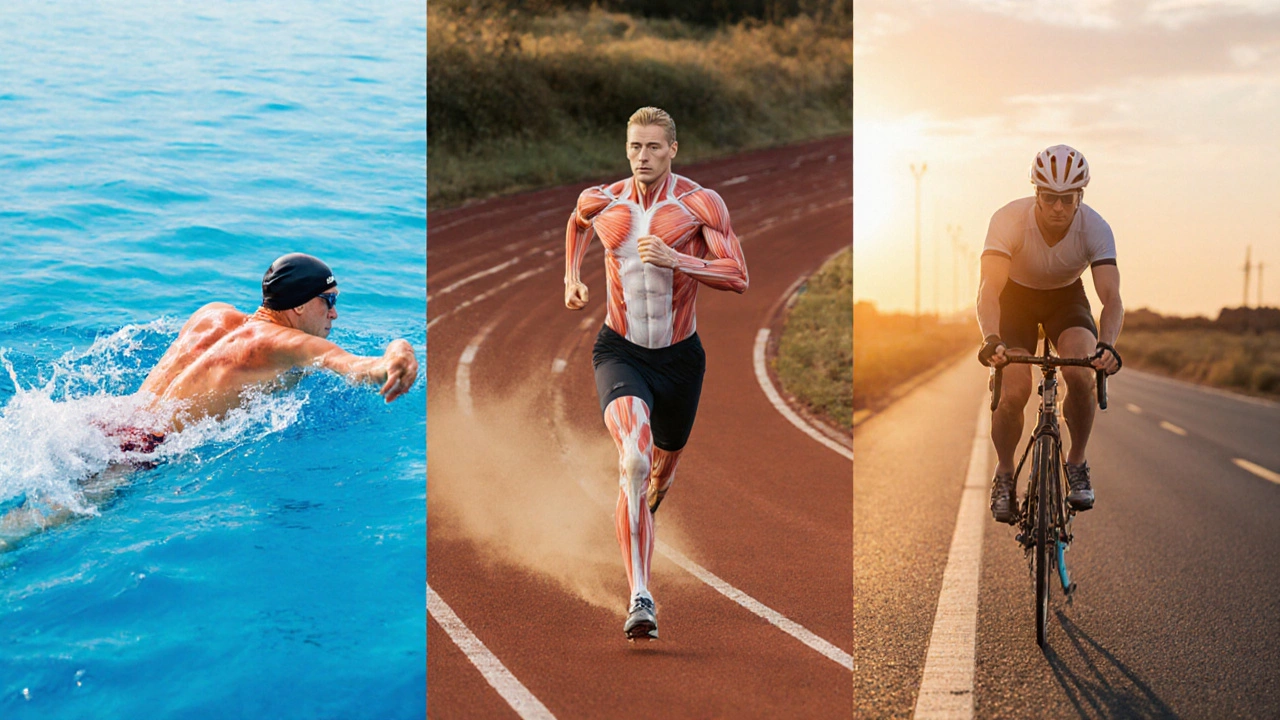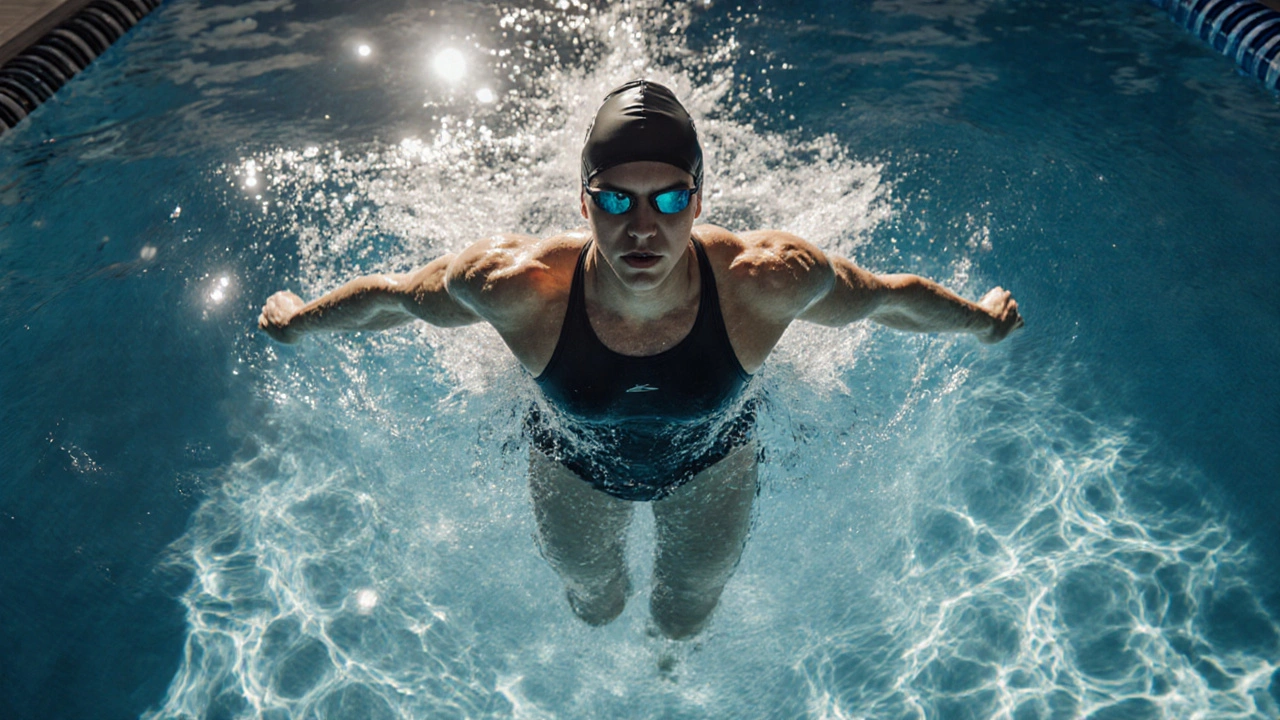Swimming Calories Burn Calculator
Estimated Calories Burned
| Stroke | Intensity | Calories / Hour (70 kg) |
|---|---|---|
| Freestyle (Moderate) | Moderate | 500 |
| Freestyle (Vigorous) | High | 700 |
| Breaststroke | Moderate | 420 |
| Butterfly | Very High | 800 |
| Backstroke | Moderate | 460 |
swimming weight loss is a question many of us ask when we see sleek swimmers on TV and wonder if hopping into a pool can melt the pounds. Below are the key takeaways you need before you lace up your goggles:
- Swimming burns 400‑700 calories per hour, depending on intensity and stroke.
- It combines cardio and resistance, boosting metabolism and muscle tone.
- Consistent sessions (3‑5 times weekly) can lead to a 0.5‑1kg loss per month.
- Choosing the right stroke and interval pattern maximizes fat loss.
- Pairing swimming with nutrition tweaks gives the fastest results.
What is swimming and why does it matter for weight loss?
When people think of Swimming is a full‑body, low‑impact aerobic activity performed in water, using various strokes to propel the body forward. It was pioneered as a competitive sport in the late 19thcentury and today serves both recreation and fitness purposes. Because water supports up to 90% of body weight, joints experience far less stress, making it ideal for beginners, seniors, and anyone recovering from injury.
From a weight‑loss perspective, swimming’s unique blend of cardio and resistance means you’re not only burning calories while moving but also strengthening muscles that keep your metabolism humming long after you leave the pool.
Understanding weight loss: the science behind the numbers
Weight loss refers to a reduction in total body mass, primarily from fat stores, resulting from a sustained calorie deficit. The classic formula is simple: consume fewer calories than you expend, and your body taps into stored fat for energy.
Three pillars drive this deficit:
- Calorie burn - the energy you spend during activity.
- Basal metabolic rate (BMR) - calories your body uses at rest, which increase with more muscle mass.
- Thermic effect of food - calories used to digest what you eat.
Swimming punches above its weight in the first two categories. Let’s see why.
How many calories does swimming actually burn?
Calorie burn is the amount of energy expended during a physical activity, measured in kilocalories (kcal). The number varies with body weight, intensity, and the specific stroke.
| Stroke | Intensity | Calories / hour |
|---|---|---|
| Freestyle (moderate pace) | Moderate | 500 |
| Freestyle (vigorous sprint) | High | 700 |
| Breaststroke | Moderate | 420 |
| Butterfly | Very High | 800 |
| Backstroke | Moderate | 460 |
For a 90‑kg person, those numbers jump by roughly 25%. The key takeaway: even a leisurely lap session can torch more calories than a 30‑minute jog, without the joint pounding.

Metabolism boost: why swimming builds more than endurance
Metabolism describes the collection of chemical processes that convert food into energy, influencing how quickly you burn calories at rest. Swimming uniquely stimulates both aerobic (heart‑lung) and anaerobic (muscle‑strength) pathways.
- Cardiovascular exercise: The continuous rhythm of strokes raises heart rate, improving VO₂ max and increasing resting calorie burn.
- Resistance component: Pushing against water’s density forces muscles to work harder than on land, especially the core, shoulders, and legs. More muscle = higher BMR.
- After‑burn effect (EPOC): High‑intensity intervals in the pool trigger excess post‑exercise oxygen consumption, keeping metabolism elevated for up to 24hours.
Choosing the right stroke for fat loss
Not all strokes are created equal. Here’s a quick guide:
- Freestyle (front crawl) - Best for sustained calorie burn; easy to maintain a moderate pace for longer durations.
- Butterfly - Highest calorie burn per minute, but demanding on shoulders; ideal for short, high‑intensity sets.
- Breaststroke - Lower impact on joints; good for beginners aiming for steady burn.
- Backstroke - Provides a break from neck strain; still delivers solid aerobic benefits.
Mixing strokes in a single workout (e.g., 5minutes each) keeps the session interesting and recruits different muscle groups, maximizing overall energy expenditure.
Designing a swimming weight‑loss program
Below is a sample 45‑minute routine that balances calorie burn, muscle engagement, and recovery:
- Warm‑up (5min): Easy freestyle at a conversational pace.
- Interval block 1 (12min): 4×100m freestyle sprint (80% effort) with 30seconds rest between each.
- Interval block 2 (12min): 3×50m butterfly (all‑out) followed by 45seconds easy backstroke.
- Endurance set (10min): Continuous breaststroke at moderate intensity, focusing on breathing rhythm.
- Cool‑down (6min): Light kickboard work and gentle stretches on the pool deck.
Goal: 3‑5 sessions per week, gradually increasing total distance by 10% each fortnight. Pair this with a modest 250‑500kcal daily deficit from diet, and expect a steady 0.5kg loss per month.
Swimming vs. other cardio: how does it stack up?
Many wonder if swimming truly outperforms jogging, cycling, or rowing for fat loss. Here’s a concise side‑by‑side look:
| Activity | Intensity | Calories burned | Joint impact |
|---|---|---|---|
| Swimming - freestyle | Moderate‑high | 350‑450 | Low |
| Running (6mph) | High | 300‑400 | Medium‑high |
| Cycling (steady 16km/h) | Moderate | 250‑350 | Low |
| Rowing (moderate) | Moderate‑high | 300‑400 | Low |
Swimming wins on joint safety and overall muscle activation, making it a sustainable long‑term option for many weight‑loss seekers.

Key metrics to track your progress
Besides the scale, monitor these indicators:
- Body mass index (BMI) - BMI is a ratio of weight to height (kg/m²) used to assess overall body composition. A drop of 1-2 points signals fat loss.
- Body fat percentage - Measured with calipers or bio‑impedance; aim for a 1% decrease per month.
- Swimming distance & pace - Use a waterproof watch to log meters per session; increasing distance without lengthening time indicates improved efficiency.
- Resting heart rate - Lower rates (by 5-10bpm) suggest cardiovascular gains.
Common pitfalls and how to avoid them
Even with a solid plan, people stumble:
- Skipping resistance work: Relying only on easy laps stalls muscle growth. Add interval sprints or pull‑buoy drills.
- Neglecting nutrition: Overeating “free calories” after a swim nullifies the deficit. Track intake for a week to calibrate.
- Inconsistent frequency: Weight loss thrives on regularity. If you can’t make it to the pool, substitute with land‑based cardio to keep the weekly calorie deficit.
- Poor technique: Bad form wastes energy and can cause shoulder pain. Consider a short lesson or video drill each month.
Putting it all together: a 4‑week action plan
Here’s a concise roadmap that merges the insights above:
| Week | Sessions | Focus | Total Distance (m) | Goal |
|---|---|---|---|---|
| 1 | 3 | Technique + moderate endurance | 1500 | Establish baseline, record calories burned |
| 2 | 4 | Introduce intervals (30sec sprint/30sec easy) | 1800 | Boost calorie rate by ~15% |
| 3 | 4‑5 | Add butterfly sets, increase total distance | 2100 | Raise EPOC effect |
| 4 | 5 | Mix all strokes, incorporate kickboard drills | 2400 | Solidify habit, prepare for long‑term program |
Track your weight, BMI, and how your clothes fit every two weeks. Adjust your food intake if the scale stalls for more than two weeks.
Frequently Asked Questions
How many calories does a 30‑minute swim burn?
For a 70kg adult, a moderate‑pace freestyle session burns roughly 350‑450kcal, while a high‑intensity butterfly set can reach 500‑600kcal.
Is swimming better than running for fat loss?
Both burn calories, but swimming adds a resistance component that preserves muscle and protects joints. If you struggle with running‑related injuries, swimming often yields a more sustainable calorie deficit.
How often should I swim to lose weight?
Aim for 3‑5 sessions per week, each lasting 30‑45minutes. Consistency trumps occasional marathon swims.
Do I need special equipment?
A swimsuit, goggles, and a good pair of water‑friendly sandals are enough. For interval work, a pull‑buoy, kickboard, or swim paddles can add resistance.
Can I combine swimming with strength training?
Absolutely. Adding two short resistance‑training sessions per week (bodyweight squats, planks, or dumbbell rows) accelerates muscle growth, which in turn boosts resting metabolism.
